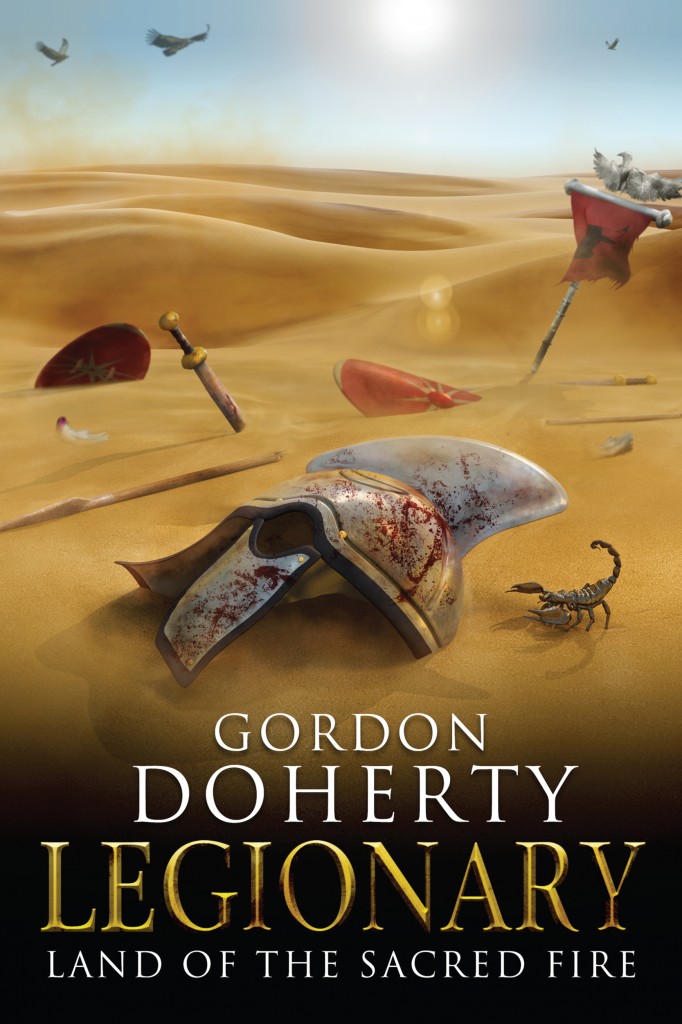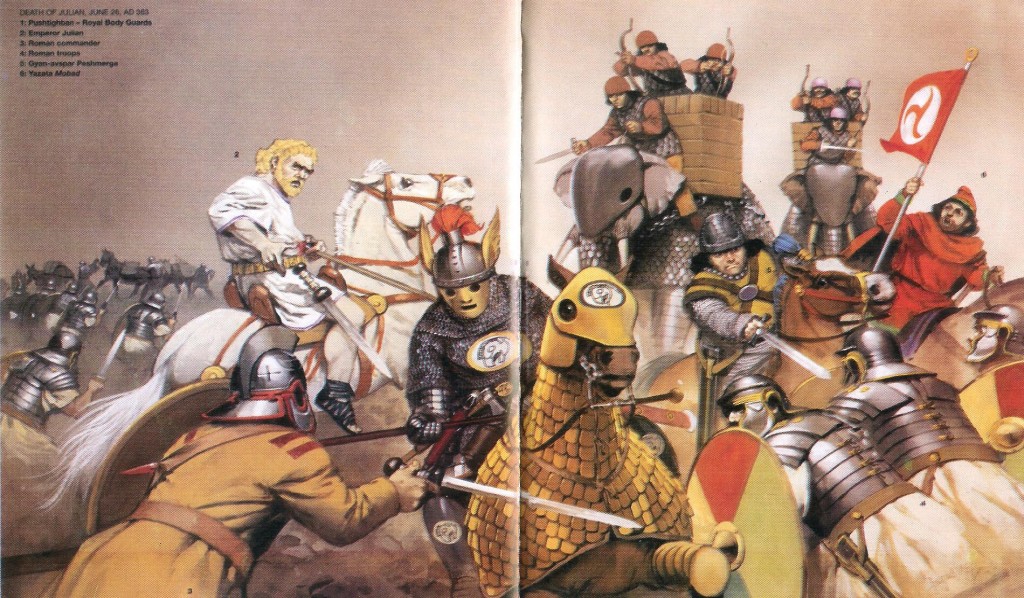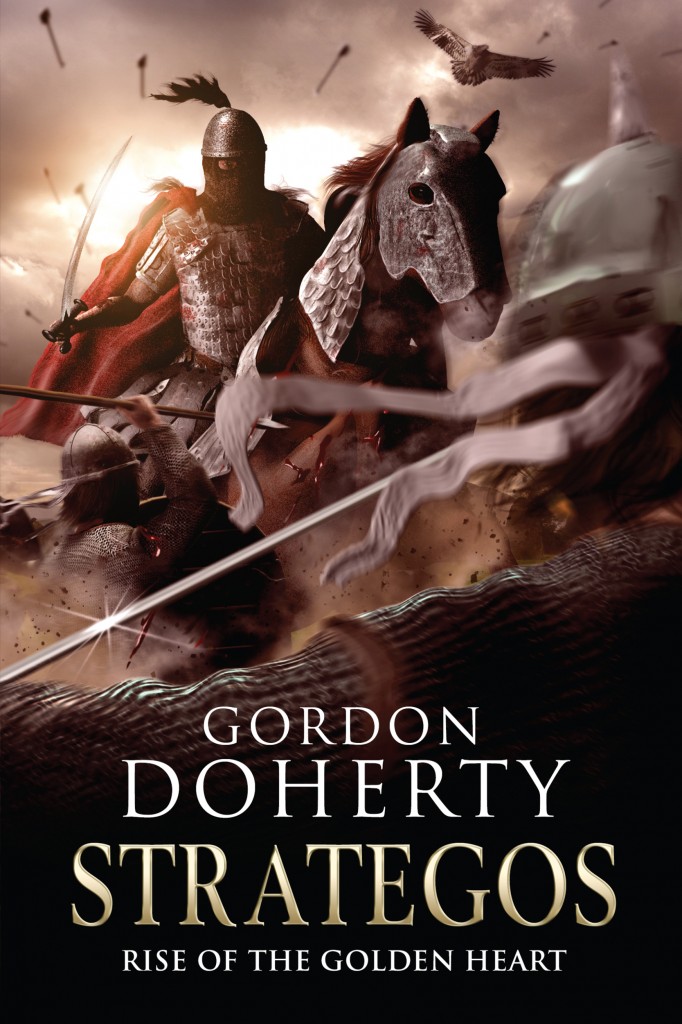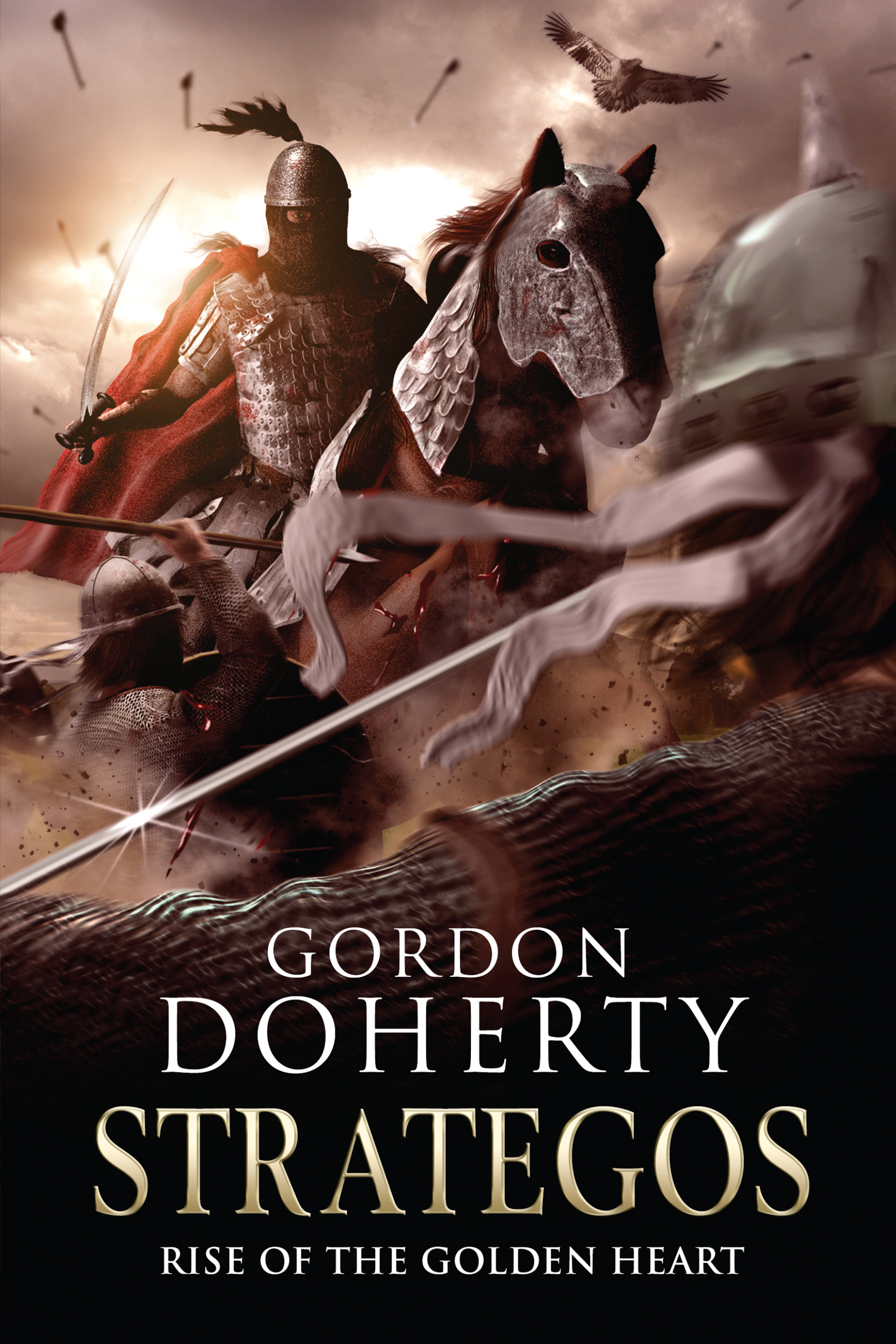Gordon Doherty is a Scottish writer, who describes himself as being addicted to reading and writing historical fiction, a task for which he is certainly highly accomplished.
 Historical writer Gordon Doherty
Historical writer Gordon Doherty
Gordon Doherty’s most recent book “Legionary: land of the Sacred Fire” is of keen interest to readers of Sassanian Military history as it deals with the Romano-Byzantine’s Eastern frontier with the Sassanian Empire.
The book is set in 377 CE, just as Emperor Valens has stripped the Sassanian-Persian frontier of its legions, sending every available man to Thracia in an effort to contain the rampaging Gothic hordes. This allows the Sassanian leadership in Ctesiphon to cast their gaze upon Rome’s trade-rich but (now) weakly-defended desert provinces. Shapur II (309-379 CE), Shahanshah (King of Kings) of the Sassanid Empire and his many client Shahan (kings) have long challenged Rome’s eastern holdings as theirs by ancestral right, and those lands have never been more vulnerable to a powerful Sassanian military strike. Thus, Valens must grasp at the slimmest of hopes that a Sassanian invasion can be staved off, not by the brute force of absent legions, but by the tenacity of a hardy few. When Optio Numerius Vitellius Pavo and a select group of the XI Claudia are summoned to the Persian front, they leave Thracia behind, knowing little of what awaits them. They know only that they are to march into a land of strange gods. They whisper tales of the mighty Persian Savaran cavalry and pray to Mithras they will see their homes and families again. All too soon it becomes clear to them that this is no ordinary mission – indeed, the very fate of the empire might rest upon their efforts. But for Pavo the burden is weightier still, for he knows that the east also holds something even more precious to him . . . the truth about his father. Gordon’s love of history was piqued during spells living and working close to both Hadrian’s Wall and the Antonine Wall, sites of rich history winding back through thousands of years. The later Roman Empire and Byzantium hold a particular fascination for Gordon. Gordon’s Legionary series is set in the Eastern Roman Empire circa 376 AD and follows the adventures of the border legions as the empire begins to waver under the relentless crush of the empire’s enemies, namely the formidable armies of the Sassanians from the east and the menacing Germanic warriors to the north. Gordon’s Strategos trilogy is set around the build up to the Battle of Manzikert in 1071 AD and follows the dark and troubled life of a Byzantine general in a land riven with bloodshed and doubt. All of of Gordon’s novels are available from good online stores in paperback and eBook format. Just click on any one of them on the slideshow (left) to find out more. In the coming years Gordon endeavors to provide his readers with more writings about these eras and to explore antiquity to the full. So, as long as the ideas keep coming to Gordon, there will be many more books to enjoy.
 [CLICK TO ENLARGE]- Emperor Julian is killed during his failed invasion of Sassanian Persia in June 26, 363 AD. Above is a recreation of Sassanian Persia’s elite cavalry, the Savaran, as they would have appeared during Julian’s failed invasion. Note the heavily armored Sassanian elite guardsman (Pushtighban) whose lance has pierced a Roman infantryman. Further right is a Savaran officer whose sword is drawn in what is now known as the “Italian grip” but Sassanian in origin. To the far right can be seen a Zoroastrian or Mithraist Magus brandishing a Sassanian era symbol. Also of interest are the armored elephants in the background. Armored elephants featured elevated cabs over the battlefield, allowing for more effective Sassanian archery (Picture source: Farrokh, Plate D, -اسواران ساسانی- Elite Sassanian cavalry, 2005).
[CLICK TO ENLARGE]- Emperor Julian is killed during his failed invasion of Sassanian Persia in June 26, 363 AD. Above is a recreation of Sassanian Persia’s elite cavalry, the Savaran, as they would have appeared during Julian’s failed invasion. Note the heavily armored Sassanian elite guardsman (Pushtighban) whose lance has pierced a Roman infantryman. Further right is a Savaran officer whose sword is drawn in what is now known as the “Italian grip” but Sassanian in origin. To the far right can be seen a Zoroastrian or Mithraist Magus brandishing a Sassanian era symbol. Also of interest are the armored elephants in the background. Armored elephants featured elevated cabs over the battlefield, allowing for more effective Sassanian archery (Picture source: Farrokh, Plate D, -اسواران ساسانی- Elite Sassanian cavalry, 2005). [Click to Enlarge] Gordon Doherty (2013). Strategos: Rise of the Golden Heart. FeedARead. Available through Amazon.
[Click to Enlarge] Gordon Doherty (2013). Strategos: Rise of the Golden Heart. FeedARead. Available through Amazon.




